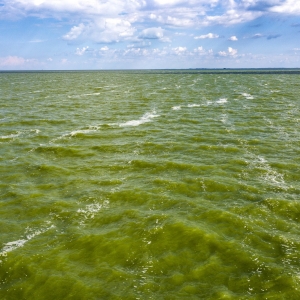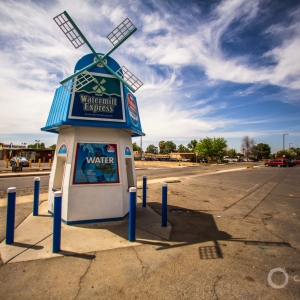Federal Water Tap, October 3: Supreme Court Hears Key Clean Water Act Case
The Rundown
- The U.S. Supreme Court begins its October term today with a wetlands lawsuit that could redefine the Clean Water Act.
- Tribes tell the Bureau of Reclamation to prioritize long-term infrastructure solutions for the $4 billion in Inflation Reduction Act funds for western drought response.
- President Biden signs a temporary funding bill that will keep the government operating through December 16. The bill includes $20 million for the water system in Jackson, Mississippi.
- The Justice Department threatens legal action against Jackson for its water system failures.
- The Army Corps will build an underwater barrier across the Mississippi River to block saltwater from moving upriver.
- The GAO tracks EPA earmarks for water and wastewater systems.
- The U.S. Forest Service estimates drinking water supply from national forests.
- NOAA weather forecast expects warmer and drier conditions in the Southwest through the winter.
And lastly, no deal between Texas and New Mexico over the Rio Grande means the lawsuit heads to trial in January 2023.
“This institution will stand with communities across America as they rebuild and recover.” — Rep. Rosa DeLauro (D-CT), speaking on the House floor in support of the continuing resolution to fund the federal government through December 16 and provide disaster assistance.
By the Numbers
$841 Million: Earmarks in the EPA’s fiscal year 2022 budget for water and wastewater projects. These funds will be distributed to 483 projects in 43 states, according to a Government Accountability Office analysis. The report also describes how the EPA will monitor the funded projects.
12.8 Percent: Share of surface water supply in the Lower 48 states that comes from national forest lands, according to a U.S. Forest Service report. National forest lands are more important in the western states, where they are the origin of 46 percent of surface water supply.
News Briefs
Sackett v. EPA
Today the U.S. Supreme Court conducts oral arguments in a crucial environmental case that could diminish the power of the Clean Water Act to curb pollution and prevent damage to wetlands.
At one level, Sackett v. EPA is about an Idaho couple’s attempt to build a home in the state’s northern panhandle. They were stymied by a ruling that protected wetlands were present on their property.
In the broad view, the outcome of the case will determine how federal agencies interpret the scope of the Clean Water Act.
Republicans are clamoring for an interpretation championed by the late Justice Antonin Scalia. In the Rapanos split decision from 2006, Scalia argued that only wetlands with a continuous surface connection to a river or lake should be covered by the statute.
Federal practice has instead favored the “significant nexus” test that was put forward by former Justice Anthony Kennedy. It allows for a subsurface connection through groundwater.
Tribes Advocate for Long-term Solutions as Reclamation Mulls Colorado River Drought Funds
The Bureau of Reclamation heard from tribes and other stakeholders in the Colorado River basin about how the agency should spend $4 billion in drought response funds that were part of the Inflation Reduction Act.
Reclamation leaders began the calls with a framework of how they will allocate the funds. Camille Touton, the commissioner, said the process will have two steps. A set price will be offered for short-term reductions in withdrawals from the river. This could be for farmland fallowing, for instance.
The second step will be soliciting proposals for longer-term projects such as removing grass, lining canals, ecosystem restoration, or other efficiency projects to conserve water that will remain in the river.
Representatives from the basin’s tribes argued that they should be a priority.
Gov. Stephen Roe Lewis, leader of the Gila River Indian Community, said that long-term solutions — like infrastructure projects that permanently reduce water use — should be first in line for funding.
“Now is the time for you to act on our behalf,” said Amelia Flores, chairwoman of the Colorado River Indian Tribes.
Recordings of the two public listening sessions will be posted here.
Budget Resolution Punts on Infrastructure Permitting
President Biden signed a temporary budget measure that funds the federal government through December 16.
The bill includes a number of add-ons:
- $20 million for the Army Corps of Engineers to assist with the drinking water emergency in Jackson, Mississippi.
- $1 billion to the federal program to help low-income residents pay their heating bills.
- $2.5 billion to for New Mexico to recover from the Hermit’s Peak/Calf Canyon fire, the largest in state history.
Not a part of the deal: changes to federal infrastructure permitting that were championed by Sen. Joe Manchin.
Feds Visit Jackson, Bring Proverbial Stick
The head of the U.S. Environmental Protection Agency and an assistant attorney general from the Department of Justice met with the mayor of Jackson, Mississippi, last week.
Michael Regan, the EPA administrator, said the agency wants to work with the city to develop a “judicially enforceable agreement” to bring the water system into compliance with operating standards.
Todd Kim of the Justice Department submitted a letter saying that the department would file a legal action unless an agreement was reached.
Mississippi River Saltwater Barrier
The Army Corps of Engineers will build an underwater barrier across the bed of the Mississippi River downstream of New Orleans in order to prevent saltwater from moving upstream.
Low flow conditions on the river have allowed salt water to advance far enough inland that the barrier is necessary to protect drinking water intakes. Because it is denser, saltwater moves along the bottom of the river.
This is the fourth time the Corps has installed the barrier, which is constructed from dredged sediment.
Studies and Reports
Drought and Hydropower
Researchers at the Pacific Northwest National Laboratory published a report on drought’s impact on hydropower in the western United States.
Even though individual dams experience sharp fluctuations in hydropower output, at a regional scale using flowing water to generate electricity shows “relative stability” so far this century, the report states.
Last year during a severe drought, hydropower generation in the region was down 16 percent compared to the 21st century average. It was the worst output since 2001.
The report does note that additional study is needed to understand the risks of hydropower curtailment from lower Colorado River dams that are under stress from declining reservoirs. Those dams are Hoover and Glen Canyon.
In context: What Happens If Glen Canyon Dam’s Power Shuts Off?
On the Radar
No Deal in Rio Grande Water Dispute
Because Texas and New Mexico were unable to come to an agreement in a dispute over Rio Grande water use, the case will go to trial on January 17, 2023, the Santa Fe New Mexican reports.
Texas claims that New Mexico is violating the Rio Grande Compact by allowing too much groundwater extraction in its portion of the basin, thus depriving Texas of its allotted water.
Dry Conditions Expected in Southwest
NOAA’s Climate Prediction Center released its three-month weather forecast. Thanks to a third La Nina year, the Southwest is expected to be drier and warmer than normal.
Looking farther out, the winter period also has a higher chance of being drier and warmer.
Federal Water Tap is a weekly digest spotting trends in U.S. government water policy. To get more water news, follow Circle of Blue on Twitter and sign up for our newsletter.
Brett writes about agriculture, energy, infrastructure, and the politics and economics of water in the United States. He also writes the Federal Water Tap, Circle of Blue’s weekly digest of U.S. government water news. He is the winner of two Society of Environmental Journalists reporting awards, one of the top honors in American environmental journalism: first place for explanatory reporting for a series on septic system pollution in the United States(2016) and third place for beat reporting in a small market (2014). He received the Sierra Club’s Distinguished Service Award in 2018. Brett lives in Seattle, where he hikes the mountains and bakes pies. Contact Brett Walton






Leave a Reply
Want to join the discussion?Feel free to contribute!